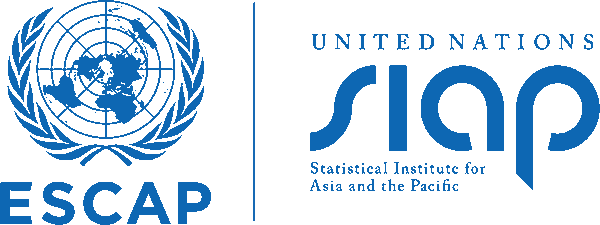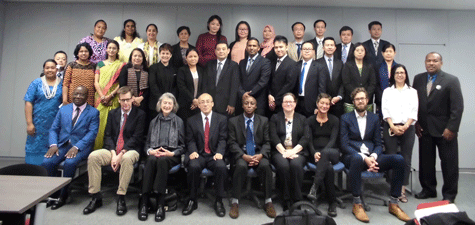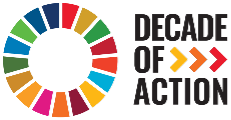
Regional Course on Informality: Definitions, Measurement, SDGs and Other Policy Indicators
- Providing technical information and illustrations of good practices on collecting and tabulating data on informal employment and employment in the informal sector, and categories of informal workers as well as related data needed for the preparation of national accounts and SDG indicators and;
- Promoting the collection of data and improvement of statistics on informal employment and employment in the informal sector as an integral part of national labour force statistics.
 | |
Document for the workshop | |
Concept Note | |
Daily Programme | |
Participants List | |
| Course Material | |
|---|---|
Module One- Framing the discussion | |
| Session 1.1 - What is the informal economy? | ppt |
| Session 1.2.1 - Statistical definitions of informal economy Informal sector | ppt |
| Session 1.2.2 - Statistical definitions of informal economy Informal employment | ppt |
| Session 1.3 - The statistical implication of the 19´th ICLS resolution | ppt |
| Session 1.4 - Mapping National Definitions of Informal Employment to International Statistical Standards | ppt |
| Session 1.5 - Special Groups of Informal workers | ppt |
Module Two: Measuring Informality, Statistically Speaking | |
| Session 2.1 - Overview of measurement objectives and methods for producing statistics on the informal economy and SDG Indicators related to employment, decent work and inequality | ppt |
| Session 2.2 - Group work Data requirements for measuring the informal economy | ppt |
| Session 2.2 - From data items to derived variables of GDP estimation | ppt |
| Session 2.2 - Statistics on the informal employment & employment in the informal sector: Statistical units | ppt |
| Session 2.3 - Gross Domestic Product (GDP) Concepts/ the Informal Economy and GDP | ppt |
| Session 2.4 - Data sources for producing statistics on the informal economy Household surveys | ppt |
| Session 2.5 - Data Sources for Producing Statistics on Informal Economy: Establishment Based Data Collection | ppt |
| Session 2.5.1 - The informal economy in national accounts statistics | ppt |
| Session 2.7 - Group activities | ppt |
Module 3 - Module Three: Producing and Presenting Statistics and Indicators on the Informal Economy: Increasing Value for Policy Needs | |
| Session 3.1 – Statistics on the informal employment & employment in the informal sector: From questions to derived variables | ppt |
| Session 3.2 - Going from derived variables to indicators on work in the informal economy Producing informal employment indicators | ppt |
| Session 3.3 - Presenting and using statistics and indicators on work in the informal economy: with focus on statistics on specific groups of workers or specific policy areas: Supporting national diagnoses of informality & the formalization process | ppt |
| Session 3.4 - Derived Variables and Contribution of the Informal Economy | ppt |
Module 4: Module Four: Way forward | |
| Session 4.1- Challenges in Improving Measurement of the Informal Economy | |
| Session 4.2 - Capacity-building for Improving Measurement of the Informal Economy | |
| Session 4.3 -Way forward: Next steps by countries — identifying actions to be taken over the next six months | |
| Case study | |
|---|---|
| Informality at a glance Snapshot by country | |
| Case study : Elements for a national diagnosis of informality in Abelina | doc |
| Exercises worksheets | xls |
